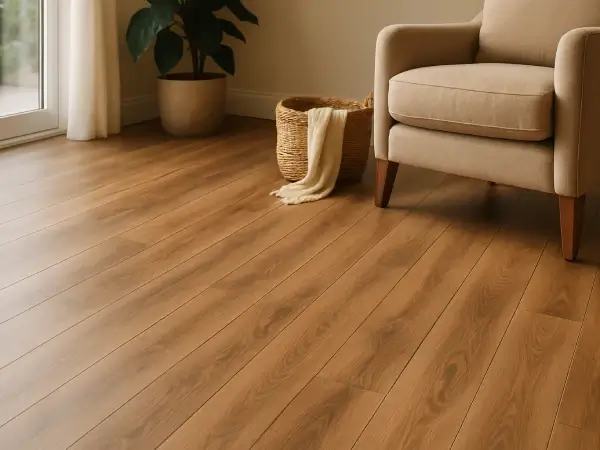Proper lighting combines ambient, task, and accent lighting to create functional and beautiful spaces.
Use our live calculator below to get your exact lighting needs in seconds.
Understanding Lighting Basics

Before diving into specific room solutions, it's important to understand the three main types of lighting:
- Ambient Lighting: General illumination that provides overall brightness to a room
- Task Lighting: Focused light for specific activities like reading or cooking
- Accent Lighting: Decorative lighting that highlights architectural features or artwork
According to lighting design expert Dr. Sarah Johnson from the International Association of Lighting Designers, "The key to successful lighting design is layering these three types of lighting to create depth and functionality in your space."
Need Help Planning Your Lighting?
Use our lighting calculator to determine the perfect amount of light for each room. Get precise recommendations for lumens, fixtures, and placement based on your room dimensions and needs.
Calculate Your Lighting NeedsLiving Room Lighting Solutions
The living room is a versatile space that requires a flexible lighting plan. Here's how to achieve the perfect balance:
- Ambient: Recessed downlights, ceiling fixtures, or a statement chandelier.
- Task: Floor lamps for reading nooks, table lamps for end tables.
- Accent: Track lighting or wall sconces to highlight artwork or architectural details.
For a modern touch, consider installing smart bulbs that allow you to adjust brightness and color temperature with your voice or smartphone.
Kitchen Illumination Guide
Kitchen lighting should be both functional and inviting. A well-lit kitchen enhances safety and makes cooking more enjoyable.
- Ambient: Flush-mount ceiling lights or recessed downlights for general illumination.
- Task: Under-cabinet LED strips to light up countertops, and pendant lights over the island or sink.
- Accent: In-cabinet lighting to showcase glassware or dishes.
As noted by the American Lighting Association, "Proper under-cabinet lighting is crucial for eliminating shadows and improving visibility during food prep."
Bedroom Ambiance Tips
Bedroom lighting should create a relaxing and restful atmosphere. Here are some ideas:
- Ambient: A central ceiling fan with a light kit or a stylish pendant light.
- Task: Bedside table lamps or wall-mounted sconces for reading.
- Accent: Dimmers on all light sources to adjust the mood.
Smart lighting can be particularly useful in the bedroom, allowing you to create a "wake-up" scene that gradually brightens in the morning.
Home Office Lighting
Good lighting is crucial for productivity and reducing eye strain in a home office.
- Ambient: Bright overhead lighting to mimic natural daylight.
- Task: An adjustable desk lamp with a focused beam.
- Accent: Bookshelf lighting or a floor lamp to brighten up corners.
For optimal focus, choose a cooler light temperature (around 4000K-5000K) for your task lighting.
Energy Efficiency and Smart Lighting
Switching to LED bulbs is one of the easiest ways to improve energy efficiency. LEDs use up to 80% less energy and last 25 times longer than incandescent bulbs. When choosing LEDs, pay attention to lumens (brightness) and Kelvin (color temperature).
Smart lighting systems take energy efficiency a step further by allowing you to:
- Schedule lights to turn on and off automatically.
- Control lights remotely from your smartphone.
- Integrate with voice assistants like Alexa or Google Assistant.
- Use motion sensors to turn lights on only when a room is occupied.
Investing in energy-efficient and smart lighting not only reduces your carbon footprint but also lowers your electricity bills. Plus, it can increase your home's value, much like investing in solar panels.
Lighting and Your Sleep Cycle
The type of light you're exposed to, especially in the evening, can significantly impact your sleep quality. Blue light, emitted by screens and some light bulbs, can suppress the production of melatonin, the hormone that regulates sleep.
To promote better sleep:
- Use warm-colored light (2700K) in the bedroom in the evening.
- Install dimmer switches to lower light levels before bed.
- Avoid bright screens for at least an hour before sleep.
- Consider "human-centric" lighting systems that automatically adjust color temperature throughout the day to support your natural circadian rhythm.
Final Thoughts
Effective room lighting is a powerful tool in home design. By layering ambient, task, and accent lighting, and by making smart choices about energy efficiency and color temperature, you can create spaces that are not only beautiful but also functional and comfortable. Whether you're undertaking a full renovation or just a simple bulb swap, a thoughtful approach to lighting can make a world of difference in your home.


Comments
Loading comments...
Leave a Comment